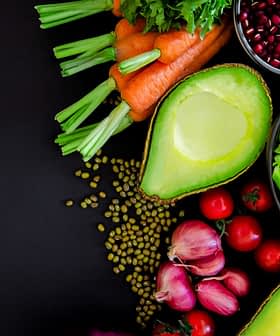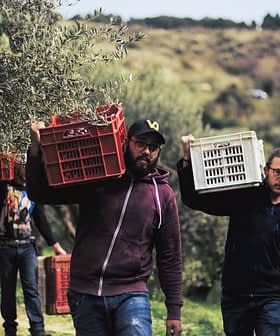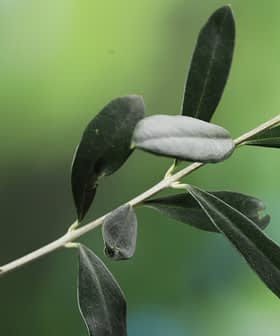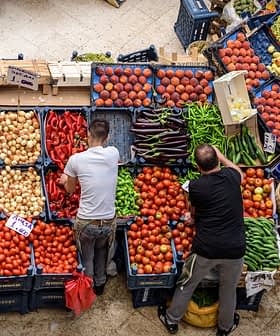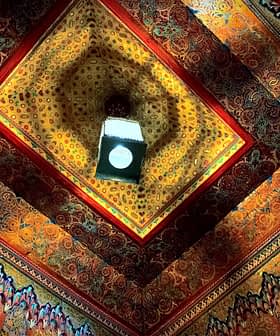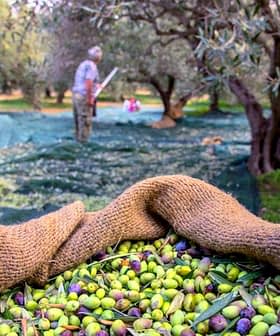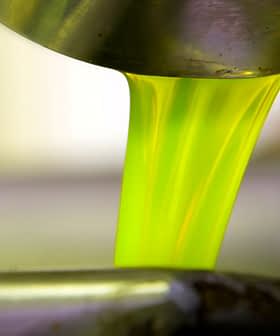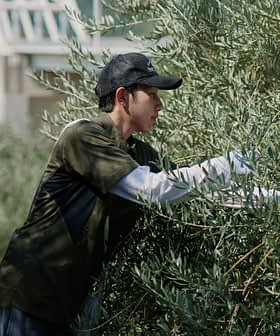Olive Architecture: A New Branch of Grove Management
A new study analyzes the architectural characteristics of olive trees to inform key decisions about cultivar selection, orchard layout, pruning and harvest.
A study in Tunisia examined physical characteristics of five olive cultivars for use in olive grove design and management, analyzing traits such as branching patterns, shoot length, and fruit production. The researchers believe that architectural analysis can inform decisions on cultivar selection, orchard layout, and pruning, potentially improving sustainable olive production when combined with sensor technology.
A new study has examined the physical characteristics of five olive cultivars as factors to be used in the design and management of olive groves.
The study, conducted in Tunisia under semi-arid conditions, analyzed the Chemlali, Chetoui, Koroneiki, Meski and Picholine cultivars.
Researchers assessed traits such as branching patterns, density, distribution of inflorescence (a group or cluster of flowers arranged on a plant’s stem, composed of a main branch or a system of branches) and fruit sites, as well as shoot length and shoot dimensions.
See Also:Study Shows Mineral Clay Applications Boost Olive Oil ProductionThey believe that so-called “architectural” analysis can inform key decisions about cultivar selection, orchard layout, pruning and harvest, as well as sustainable olive production when combined with sensor and data technology.
Branching density and shoot length varied significantly among cultivars. Koroneiki had the longest average shoot length (33.5 centimeters), while Chetoui had the shortest (22.2 centimeters).
Chemlali and Koroneiki exhibited high shoot densities with thin, compact branches. These traits may lend themselves to mechanized pruning and harvesting due to their structural uniformity, and are often desirable in dense systems that require high canopy fill.
Chetoui, with a greater share of long shoots, displayed more vertical, less compact growth. This combination could offer better manual accessibility for traditional or mixed-use groves.
Shoot length also varied by branching order: the hierarchical position of a shoot or branch within the tree’s shoot system, based on its sequence of emergence from previous growth units.
Longer shoots were generally found in secondary branching and became shorter in higher branching orders. Internode numbers followed a similar pattern, with the highest counts in secondary branching and the lowest in senary (pertaining to six) branching.
Basal diameter and apex thickness also decreased with increasing branching order. In addition, thinner shoots were often associated with higher inflorescence and fruit yield in Chemlali and Koroneiki.
This suggests that lower vegetative vigor may correspond to increased reproductive output, a possible advantage in intensive groves.
Fruit production followed distinct patterns. Chemlali, Chetoui and Picholine produced inflorescences and fruits in the same branching orders, indicating a synchronized reproductive structure.
Meski and Koroneiki, however, produced fruits in different branching orders from their inflorescences, suggesting a delayed or redistributed fruiting process.
Recognizing where each cultivar focuses reproductive effort can allow for more efficient fruit thinning and targeted pruning.
See Also:New Research Reveals Impact of Malaxation on Olive Oil Phenolic ProfileCultivars with mismatched flowering and fruiting zones may need different pruning strategies or support to boost fruit retention, as well as adjusted planting densities. As cultivars with coordinated flowering and fruiting are easier to manage, they may be particularly suited to mechanized harvesting.
Branch insertion angles were found to influence shoot orientation and canopy structure. Shoot angle also affects light interception and pest exposure, both of which are important factors in integrated pest management strategies.
Angles ranged from 30 to 90 degrees, depending on the cultivar and branching order.
Secondary or tertiary branching shoots often formed 90-degree angles, while quinary and senary branching shoots had narrower angles. Chemlali and Koroneiki had a greater number of 90-degree angles, promoting lateral canopy expansion.
Meski, Chetoui and Koroneiki showed similar insertion angle patterns, suggesting inter-cultivar compatibility for shared orchard layouts. This uniformity could simplify pruning and mechanized harvesting.
Generally, similar branching geometries among cultivars support co-planting in mixed groves.
Uniform insertion angles can also simplify mechanical operations and facilitate more consistent light distribution, a conclusion echoed in a recent study using uncrewed aerial vehicles that links canopy shape with light interception and yield.
While acknowledging that the direct applications of their work are still being explored, the researchers believe that their methods and findings can serve as valuable tools in several key fields related to the olive industry. These include genetics and breeding, agronomy, engineering, pathology and entomology.
Although architecture alone does not predict yield, it can inform key decisions in areas such as cultivar selection, orchard layout, pruning and harvest.
When combined with modern sensing tools, such as uncrewed aerial vehicles-based multispectral imaging, it may prove immensely beneficial to the development of data-driven, sustainable olive production.
Share this article
